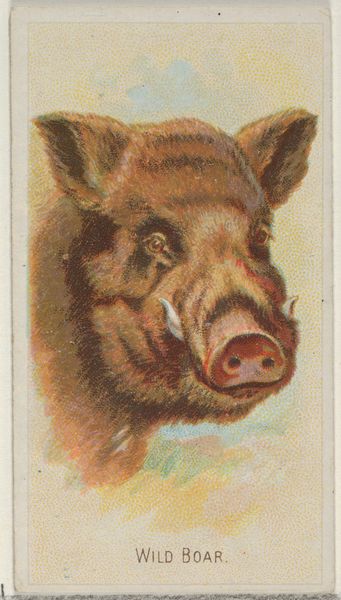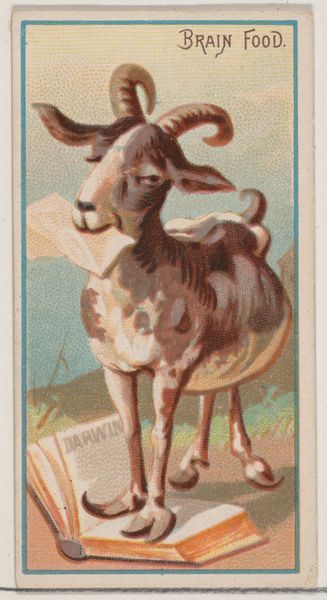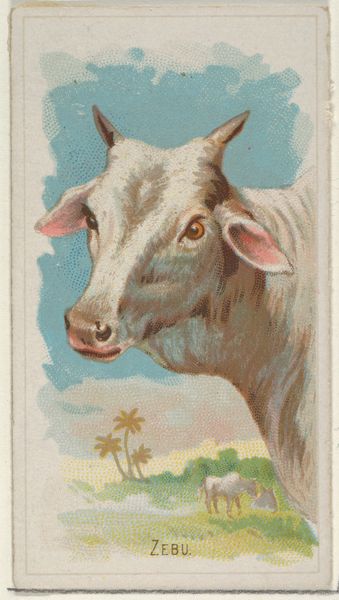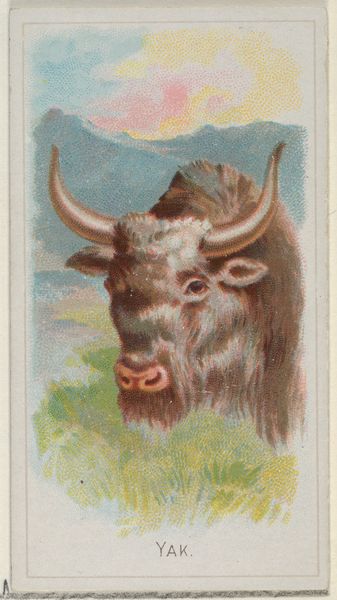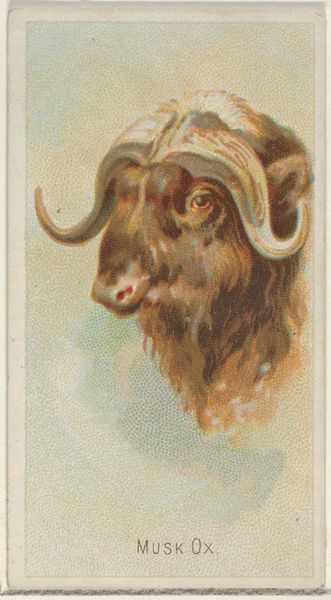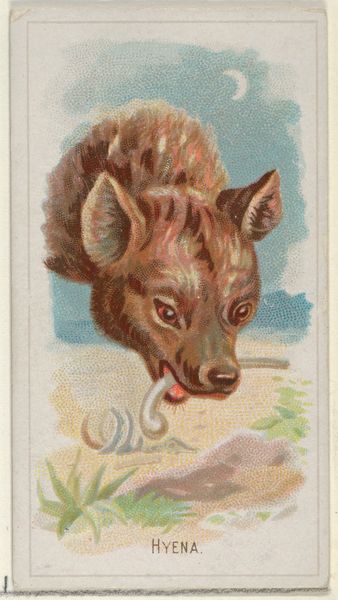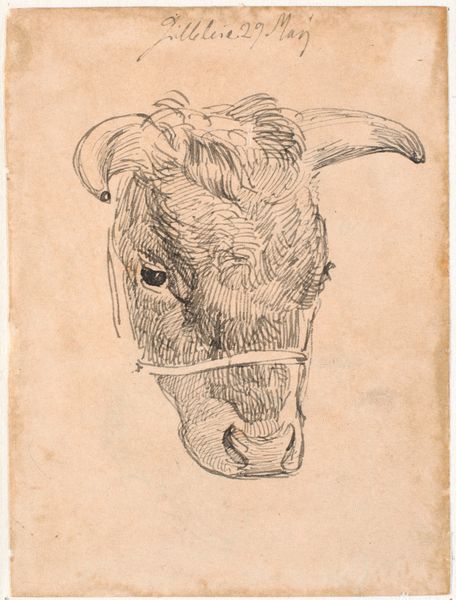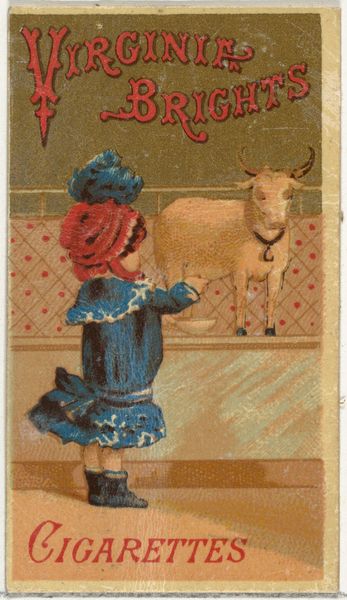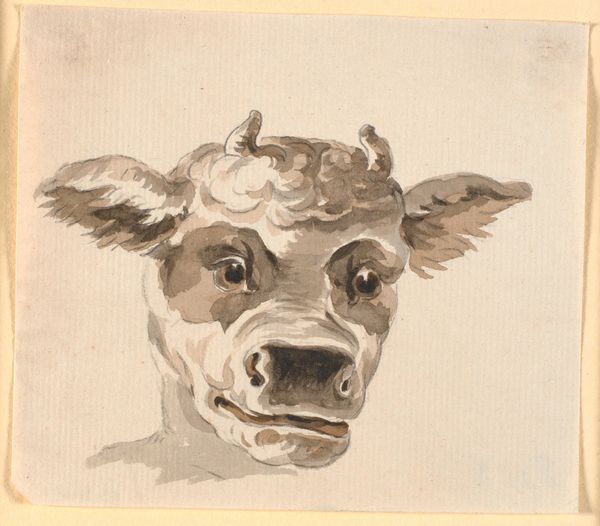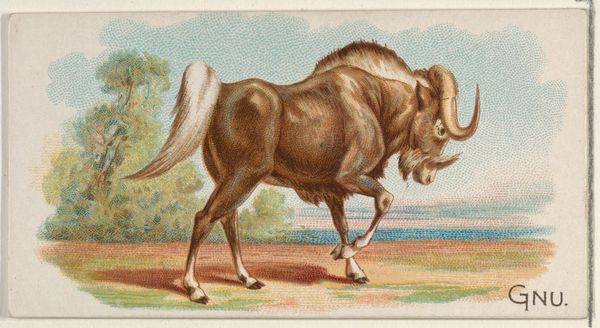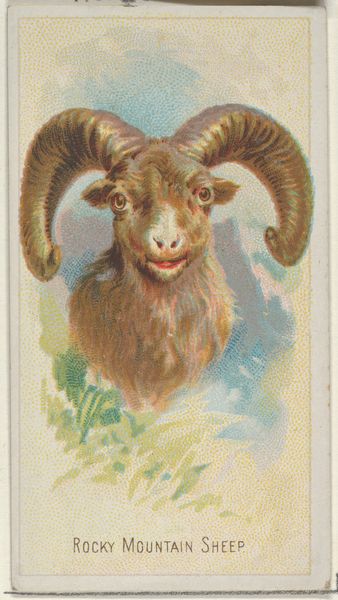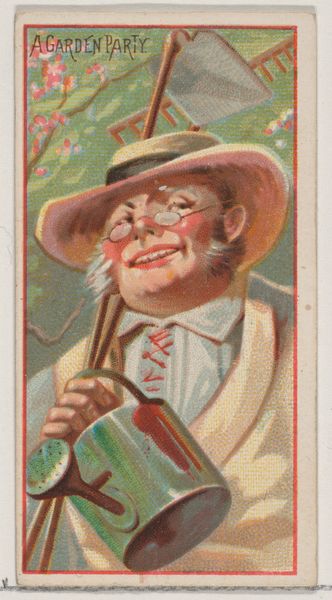
Dressed Beef, from the Jokes series (N87) for Duke brand cigarettes 1890
0:00
0:00
Dimensions: Sheet: 2 3/4 × 1 1/2 in. (7 × 3.8 cm)
Copyright: Public Domain
Editor: This is "Dressed Beef, from the Jokes series (N87) for Duke brand cigarettes," a print made around 1890. I'm immediately struck by how absurd it is – a cow dressed in formal wear. What do you see in this piece, beyond the obvious humor? Curator: The humor's definitely a gateway. But look closer: it's a caricature published by a tobacco company, W. Duke & Sons. How does this image function within its specific cultural context? Is it simply lighthearted, or could it be critiquing the societal elite, who are metaphorically portrayed as cattle being led to slaughter by industrial capitalism? Think about who controlled meat production at that time. Editor: I hadn't considered the critique angle. I guess it challenges this romanticized view of wealth. What's your read on it? Curator: Exactly. Consider the visual cues: the monocle, top hat, and formal attire read as signifiers of the upper class. However, they are imposed onto an animal traditionally seen as livestock – almost as a commodity. Doesn’t this commodification of life connect with current capitalist exploitation and consumer culture? Editor: That's thought-provoking. It connects it to our era where appearance often disguises deeper exploitation. Seeing it through that lens, it isn't just silly but sharply critical. Curator: Precisely. Humor allows for subversive messages to slip through. This work might not only be making fun of the elite but implicating the very systems—represented here by the tobacco company—that perpetuate such inequalities. Now, do you feel differently about the work? Editor: Absolutely! It reveals layers of meaning that connect the past with the present, showing how social critiques can be embedded in what appears to be mere entertainment. Curator: Agreed, these prints may seem dated, yet the core message remains relevant: questioning the façade of high society and reflecting the commodification that permeates various levels of modern-day experience.
Comments
No comments
Be the first to comment and join the conversation on the ultimate creative platform.
